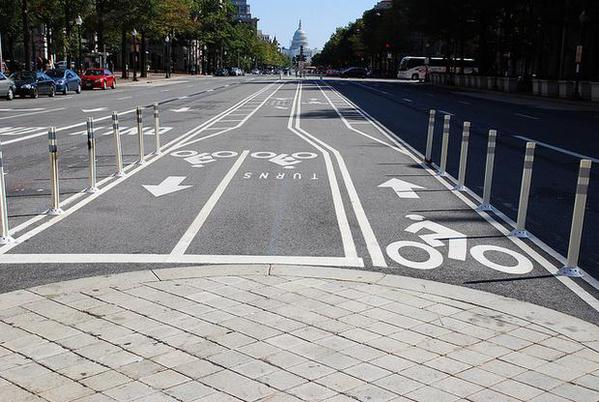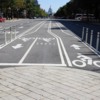[Adam Fagen/Flickr]
New data from the U.S. Census Bureau offers encouraging news for cyclists: Nationally, bicycle commuting increased 61 percent between the 2000 Census and a 2008-2012 survey. But there's considerable work to do before we bike ride into the sunset. Our research shows that in some places, the people who ride are mostly wealthy and white.
Take Washington, D.C., for example. American Community Survey data show that D.C. bicycle commuting increased an astounding 208 percent between 2000 and 2012. Yet biking to work is far less common in the lower-income areas east of the Anacostia River. Despite the recent additions of substantial cycling infrastructure, many mobility challenges remain.
Our research examines mobility barriers, perceived or real, among low-income residents in Washington. As cyclists ourselves, our initial study aimed to help the Washington Area Bicyclist Association plan its advocacy in D.C.'s Wards 7 and 8—areas that are more than 94 percent African-American, and with above-average poverty. With a $29 budget and a team of American University students, we surveyed more than 260 commuters in two surveys in 2012 and 2013. Below are three of our key findings.
1. Poor respondents spend more time commuting. We knew already that Ward 7 and 8 residents earn less, travel longer, and use public transit more than the city as a whole. Our surveys found that low-income commuters in these wards still spend more time traveling than their non-poor counterparts.
http://www.citylab.com/commute/2014/07/how-low-income-commuters-view-cycling/374390/




Comments (0)